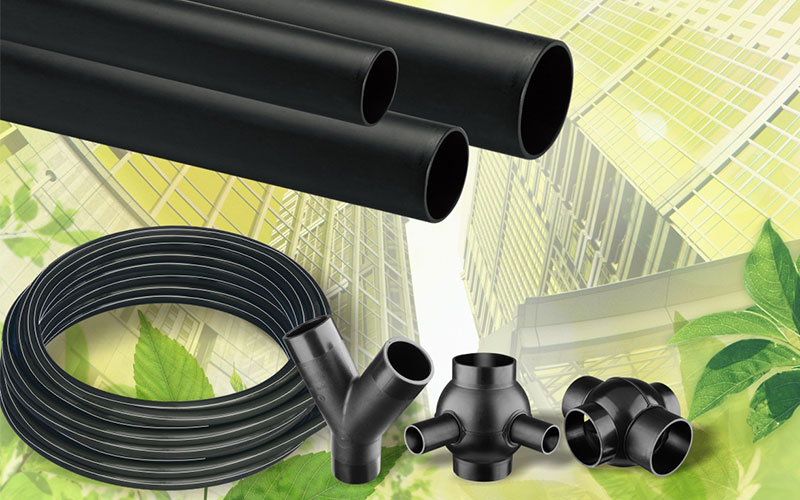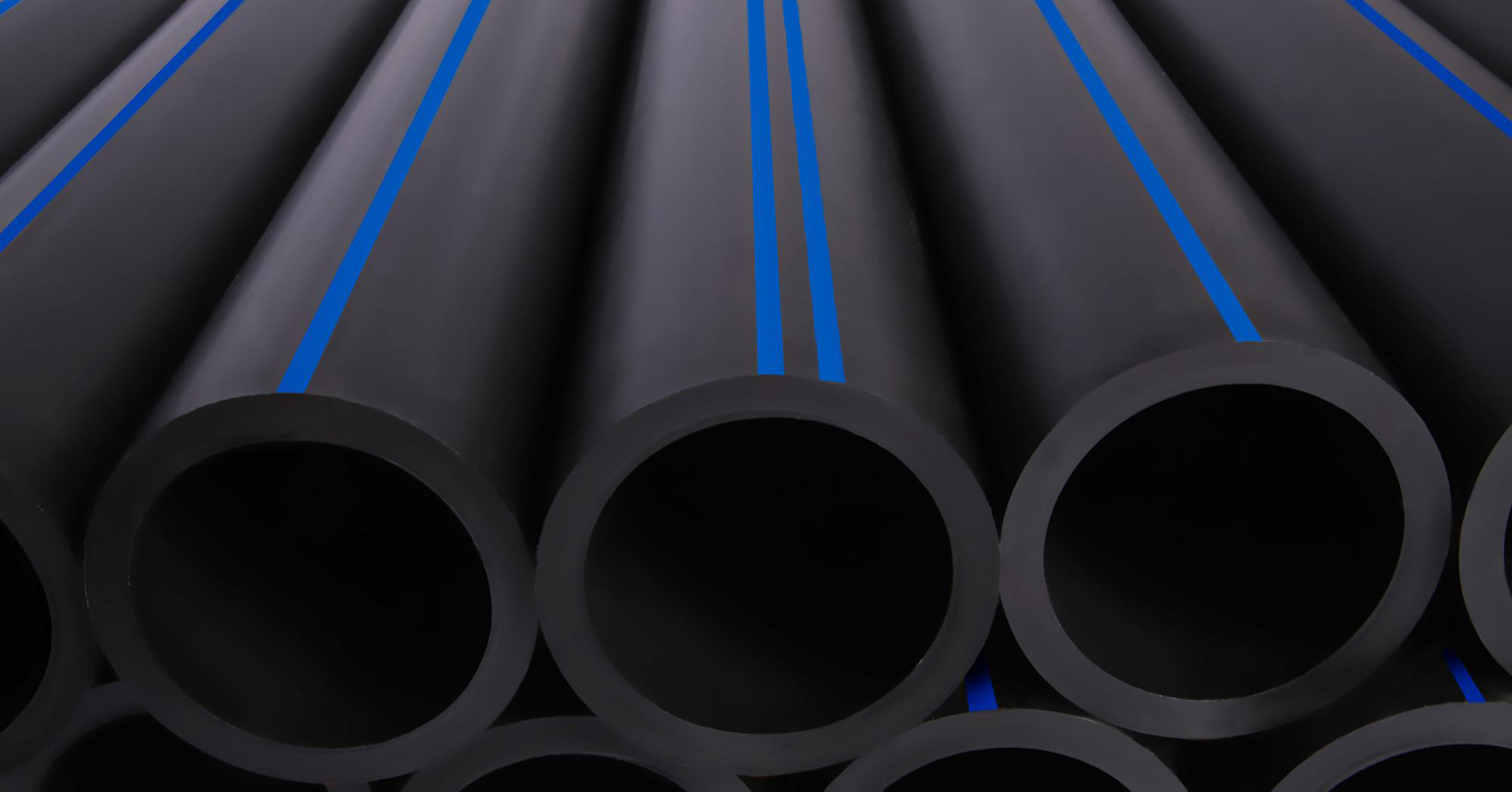Why hdpe pipe in stock Midland TX Is Valuable for Local Industries
Discover the Manufacturing Refine Behind High-Quality HDPE Pipeline and Its Applications
The production procedure of high-quality HDPE pipelines is complex and methodical. It starts with the option of raw materials that enhance performance. Following this, ethylene undertakes polymerization to develop material, which is after that formed with extrusion. Quality assurance is paramount, ensuring that the end product satisfies strict standards. Nevertheless, the journey of HDPE pipes does not finish with manufacturing. Their applications across various markets expose a wider value worth analyzing.
Recognizing HDPE: Residences and Advantages

High-density polyethylene (HDPE) is a versatile thermoplastic understood for its longevity and resistance to different environmental factors. This material displays excellent tensile stamina, making it appropriate for demanding applications. Its low-density framework adds to a light-weight item, promoting convenience of managing and setup. HDPE also showcases exceptional resistance to chemicals, which lessens deterioration when subjected to harsh substances.
The material's low moisture absorption even more boosts its long life, making it optimal for use in pipelines and tank. Additionally, HDPE is resistant to ultraviolet (UV) radiation, making sure that items keep their honesty also when subjected to sunlight. Additionally, its adaptability permits for the development of complex shapes without endangering stamina. The environment-friendly nature of HDPE, typically stemmed from recycled materials, includes to its allure, promoting sustainable methods in manufacturing. Generally, these buildings and benefits make HDPE a preferred option for different industrial and customer applications.
Basic Material Choice for HDPE Production
The option of resources for HDPE production is necessary to confirm the last product meets the preferred specs and quality criteria. High-density polyethylene (HDPE) is mostly created from polymerized ethylene, obtained from nonrenewable fuel sources such as natural gas or crude oil. The quality of these feedstocks substantially affects the mechanical and thermal buildings of the last HDPE.
Additives additionally play a significant function in enhancing HDPE's performance, consisting of anti-oxidants, UV stabilizers, and colorants, which improve sturdiness and resistance to ecological elements. The choice process need to consider not just the chemical composition of the raw materials but additionally their processing attributes to ensure efficient production.
Additionally, the sourcing of raw materials must prioritize sustainability and compliance with environmental guidelines, as liable practices are necessary in today's market. Inevitably, careful resources selection lays the structure for creating high-grade HDPE pipelines appropriate for diverse applications.
The Extrusion Process: Forming HDPE Pipe
The extrusion procedure plays an important function fit HDPE pipelines, beginning with thorough product prep work techniques that guarantee optimal flow and consistency. Equally important is the design of the die, which straight affects the final measurements and surface top quality of the pipe. With each other, these variables add considerably to the effectiveness and top quality of HDPE pipeline production.
Product Prep Work Techniques
Effective production of HDPE pipelines begins with careful product prep work techniques, particularly the extrusion process. Throughout this phase, high-density polyethylene material is first dried out to get rid of wetness, making certain optimal flow attributes. The resin is after that fed into the extruder, where it undergoes home heating and melting, transforming right into a thick state. This heating process is meticulously regulated to keep the product's stability and performance. The liquified HDPE is compelled via a die, shaping it right into a continuous pipeline form. Correct temperature level monitoring during extrusion is essential, as it directly influences the material's residential or commercial properties and the final product high quality. When shaped, the HDPE pipe is cooled and cut to defined lengths, all set for subsequent processing and applications.
Die Style Value
Precision in die layout plays a crucial role in the extrusion procedure of HDPE pipelines. The die offers as the last shaping device, directly affecting the pipeline's measurements, wall density, and surface area finish. A well-designed die warranties uniform product circulation, minimizing problems such as irregularities and weak points. The geometry of the die have to be optimized to fit the specific properties of HDPE, including its viscosity and thermal actions during extrusion. Furthermore, the cooling price of the material as it passes via the die can considerably affect the pipe's architectural stability. Investing in advanced die innovation is vital for producers aiming to create top notch HDPE pipelines that satisfy sector standards and client assumptions.
Quality Assurance Actions in HDPE Production
Although various factors influence the quality of HDPE pipe manufacturing, efficient quality control actions are important to guarantee consistency and integrity in the end product. Key quality assurance techniques include rigorous product inspection, verifying that the raw polyethylene meets established requirements for pureness and density. Throughout the extrusion process, specifications such as temperature level, pressure, and cooling time are closely kept an eye on to maintain dimensional precision and structural honesty
On top of that, post-production testing is necessary; producers typically carry out hydrostatic tests to analyze the pipe's strength and resistance to pressure. Aesthetic examinations for surface problems further boost quality control. Certification from pertinent requirements organizations, like ASTM or ISO, supplies an additional layer of trustworthiness. By carrying out these extensive quality control procedures, manufacturers can reduce issues, improve performance, and make certain that the HDPE pipes satisfy the specific demands of various applications, eventually leading to consumer complete satisfaction and rely on the item.
Applications of HDPE Pipeline Across Industries
HDPE pipelines are utilized throughout numerous sectors because of their longevity and adaptability. In water circulation systems, they guarantee efficient distribution, while in wastewater administration, they give dependable options for waste transportation. Additionally, farming watering networks gain from HDPE's resistance to rust and adaptability, making it an ideal choice for contemporary farming techniques.

Water Circulation Equipments
A significant variety of industries depend on high-density polyethylene (HDPE) pipes for reliable water circulation systems. Recognized for their longevity and resistance to deterioration, HDPE pipes are commonly used pex expansion fittings in local water system networks, farming irrigation, and commercial applications. Their lightweight nature helps with easy handling and installment, lowering labor costs and time. Furthermore, HDPE pipelines can fit different pressure levels, making them appropriate for both reduced and high-pressure systems. Pipe Manufacturing Midland TX. The versatility of the product permits smooth assimilation right into existing facilities, lessening the demand for extensive excavation. In addition, HDPE's resistance to chemical leaching warranties that the water supplied stays secure and clean, making it an excellent option for keeping the top quality of potable water across various industries
Wastewater Administration Solutions
Efficient water circulation systems likewise lead the way for ingenious wastewater administration remedies, where high-density polyethylene (HDPE) pipelines play a significant function. Renowned for their longevity and resistance to rust, HDPE pipelines are optimal for carrying wastewater in numerous setups. Their versatility permits easy setup in intricate atmospheres, minimizing the requirement for substantial excavation. Additionally, HDPE's smooth indoor surface minimizes friction, enhancing circulation prices and efficiency. These pipes are likewise resistant to chemical leaching, making sure that contaminants do not compromise the surrounding atmosphere. Industries, communities, and therapy facilities progressively like it depend on HDPE pipes for their reliability and long life, making them a preferred choice for contemporary wastewater administration systems. This adaptability underscores the crucial relevance of HDPE pipelines across numerous applications.
Agricultural Irrigation Networks
Agricultural watering networks benefit greatly from making use of high-density polyethylene (HDPE) pipes, which provide efficient and reputable water shipment to crops. HDPE pipelines are lightweight, making them simple to transfer and install, while their versatility permits different setups in varied surfaces. These pipes demonstrate superb resistance to rust, chemicals, and UV radiation, guaranteeing resilience in severe agricultural environments. In addition, their smooth interior surface decreases rubbing loss, enhancing water circulation and minimizing power prices associated with pumping. The durability of HDPE pipes, often exceeding 50 years, contributes to decrease upkeep and substitute expenses. Subsequently, farmers increasingly rely upon HDPE pipelines to improve watering performance and advertise sustainable farming practices, inevitably causing enhanced plant yields and resource preservation.
Future Trends in HDPE Pipe Modern Technology
As the demand for lasting and effective infrastructure grows, improvements in HDPE pipe technology are poised to change different industries. Emerging patterns consist of the combination of smart innovations, such as sensors and IoT abilities, which facilitate real-time monitoring of pipe problems, lowering upkeep expenses and avoiding leakages. Additionally, the development of advanced production methods, such as 3D printing, is making it possible for the production of complex, personalized pipe designs that satisfy particular task demands.
Moreover, the emphasis on recycling and round economic climate techniques is driving the technology of HDPE pipelines made from recycled materials, boosting sustainability. Improved jointing methods, such as electro-fusion and mechanical installations, are likewise boosting setup performance and reliability. The expanding emphasis on environmental policies is pushing suppliers to embrace greener production procedures, making sure that HDPE pipelines not only meet sector requirements but also promote a more lasting future for infrastructure advancement.
Often Asked Questions
How Does HDPE Contrast to Various Other Plastic Materials?
HDPE outperforms several other plastic materials pertaining to toughness, chemical resistance, and flexibility. Its reduced thickness and high tensile strength make it excellent for numerous applications, typically surpassing alternatives in both efficiency and long life.
What Are the Environmental Impacts of HDPE Production?
The environmental effects of HDPE manufacturing consist of greenhouse gas emissions, power usage, and prospective contamination from producing processes. Additionally, improper disposal can bring about dirt and water contamination, elevating concerns concerning lasting environmental impacts.
Can HDPE Piping Be Reused?
Yes, HDPE pipes can be recycled. Numerous centers approve made use of HDPE for processing, transforming it into new products. This reusing contributes to sustainability initiatives, lowering plastic waste while preserving resources and energy in the manufacturing cycle.
What Is the Life Expectancy of HDPE Pipeline?

Just How Do Temperature Variants Impact HDPE Pipeline Efficiency?
Temperature level variants substantially influence HDPE pipe performance, affecting versatility and toughness. High temperatures can bring about softening, while see reduced temperatures may cause brittleness, ultimately affecting the pipeline's resilience and viability for numerous applications in varied settings.